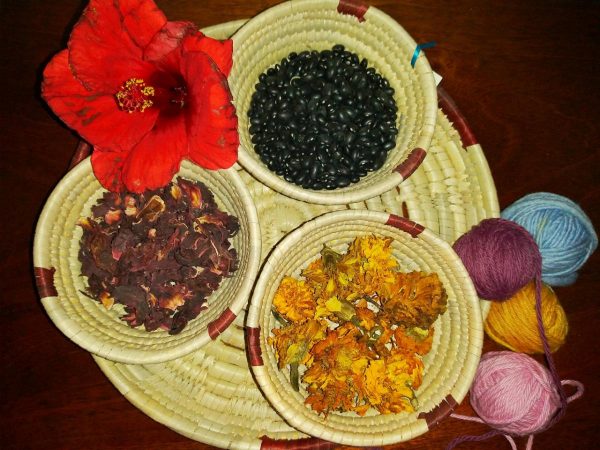Now that you’ve hand spun your own yarn, or purchased natural, undyed wool, cotton, or silk yarn, the next step in our process is to DYE it. The Navajo weavers would gather their plant material in the early morning, “The Holy People taught us that there is wisdom and beauty in the darkness before dawn.” They collected rabbit brush for yellow color, mountain mahogany bush to get red, and many others. I am able to plant my preferred materials in my own backyard.
There are two sources for natural dyes, plants and animal. Some common and easily gathered plant materials are yellow onion, Marigolds, Hibiscus, red cabbage, and black beans. There are fewer animal sources for dye, and I’ve only tried one of them. Cochineal is a bug, and yields a beautiful deep red. Cow urine will produce yellow, and the Murex snail will dye purple. Both plant and animal dyes work well on animal fibers, like wool, silk. Plant fibers, such as cotton, don’t pick up the dye as well. But the color you get relies on many things, how much plant material you use, and the amount of yarn you’re dying. Plus other factors, like where the material was grown, minerals in the soil, sun light and water it has received, how old the material is. So many variables!! It is unlikely you will be able to repeat the exact color again. but that is part of the beauty in the process.
In the next session, we will cover how to make the dye bath and the steps for dyeing the yarns. Take some time to “wildcraft” (gather) you own plant materials and get ready for the next fun!
